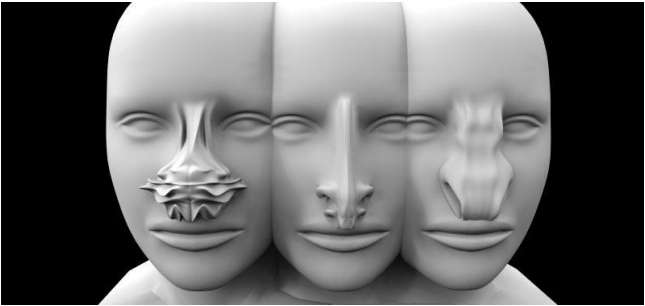There is a great deal of talk these days about colonizing Mars, and about the conditions that would need to be met in order to live and thrive there. 3D printing has been a big part of the conversation, as the technology would likely be used to build much of what humans need, including shelter. But there hasn’t been as much talk about what might happen to humans long term living on Mars. Would we evolve, based on the different conditions on a foreign planet? Marta Flisykowska speculates about this in a paper entitled “Application of Incremental Technologies in Consideration of Transhumanist Aesthetics – Project ‘Who Nose‘”.
In 2017, Flisykowska points out, NASA published the results of the Human Research Program, which was launched in an effort to find out more about the impact of long stays in space on the human body. Vastly different conditions will be present on Mars, such as lower temperatures, a less dense atmosphere, higher radiation and more. In the face of these conditions, what might humans evolve to look like? The depiction of extraterrestrials in literature and pop culture “often extended to the point of kitsch,” says Flisykowska, but these depictions were also based on ideas about the types of conditions that these creatures lived in.
Flisykowska focuses on the nose as having the most potential for change, as it is made from soft tissue and is easily alterable through plastic surgery. A study conducted by the University of Pennsylvania showed that the width of people’s nostrils was influenced by the climate in which their ancestors lived; those from warm and humid climates had wide nostrils while those from cold and dry climates had narrower ones. For her own study, Flisykowska 3D printed several different noses that could potentially be part of humans’ future appearance on Mars.
One possible adaptation is a long nose with double nostrils, which would make it easier to warm up air, as well as to practice breathing techniques for relaxation purposes. Another is a flat nose that would be less prone to sunburn and would also be better suited to the long-term use of a helmet. Still another resembles a sort of radiator, to promote a more resonant voice.
“The nose is a resonator and has an influence on acoustic effects,” Flisykowska explains. “Since communication is mainly conducted with the use of microphones, its effect will be the same as in an aircraft cockpit, which means that some frequencies will be interrupted by noises, and this would make communication more difficult.”
The “Who Nose” project does not necessarily claim that humans will evolve these drastically different noses if they begin living on Mars, but illustrates some possibilities in terms of 3D printing and plastic surgery to better equip us for different conditions. These different designs could even affect our lives here on Earth. We have already 3D printed a transplantable ear, Flisykowska argues, so why not a nose? And if we can 3D print it, why does it have to look the same as it has always looked? 3D printing could open new doors in terms of body modification, allowing us to be in charge of our own evolution, in a manner of speaking.
Discuss this and other 3D printing topics at 3DPrintBoard.com or share your thoughts below.
